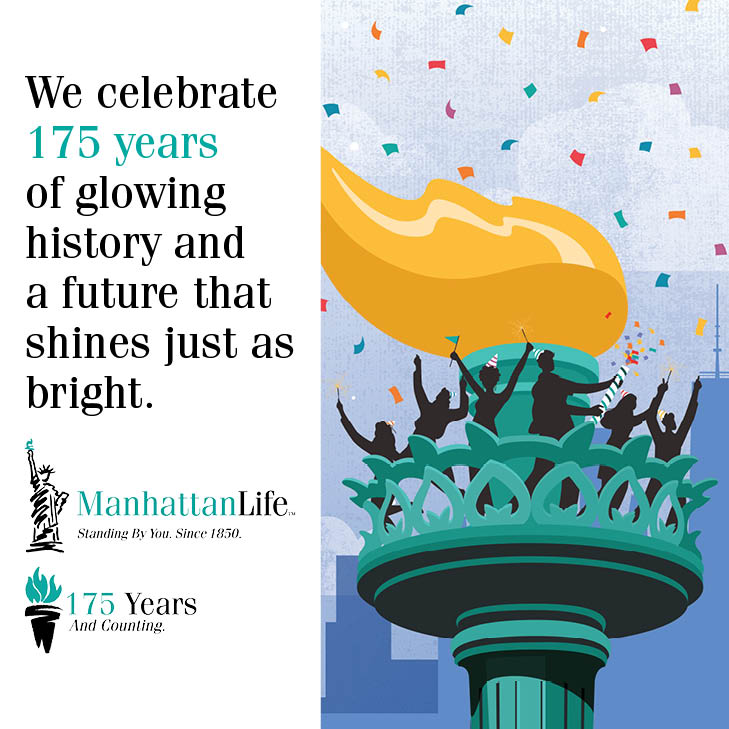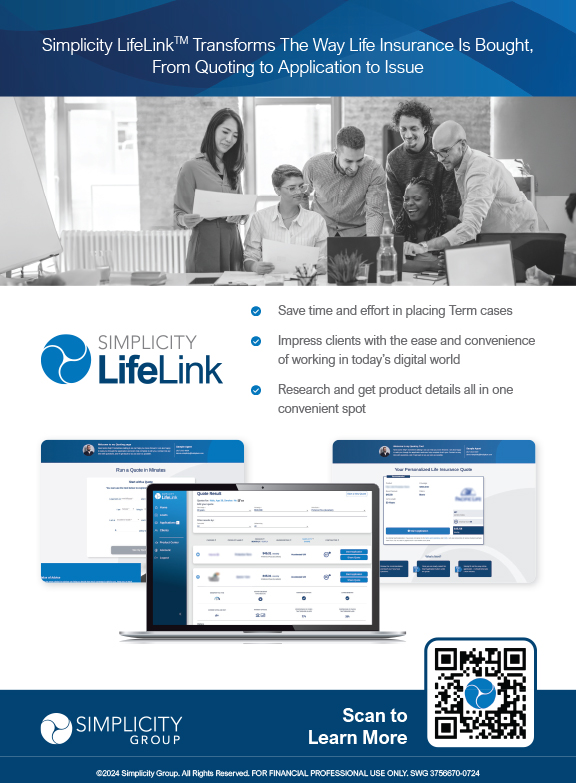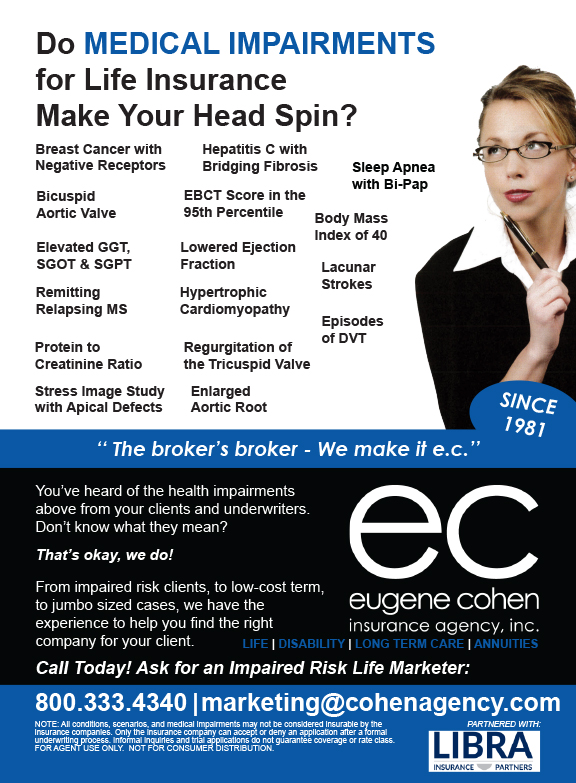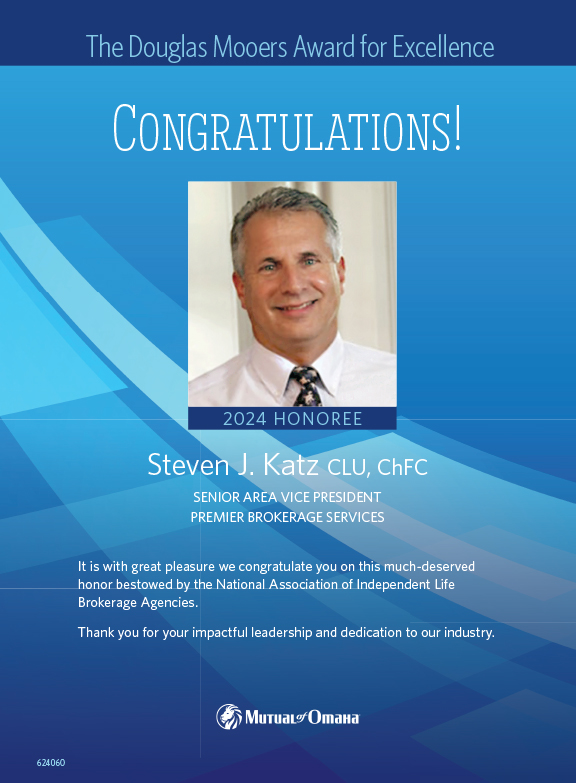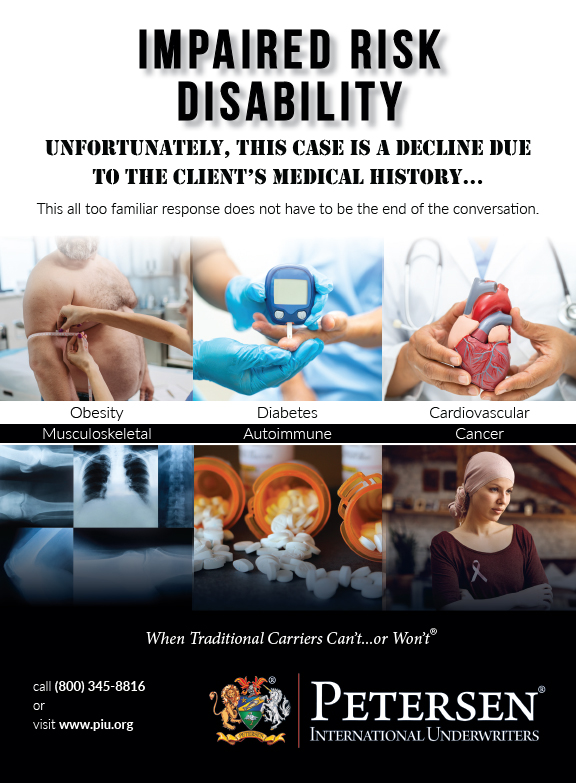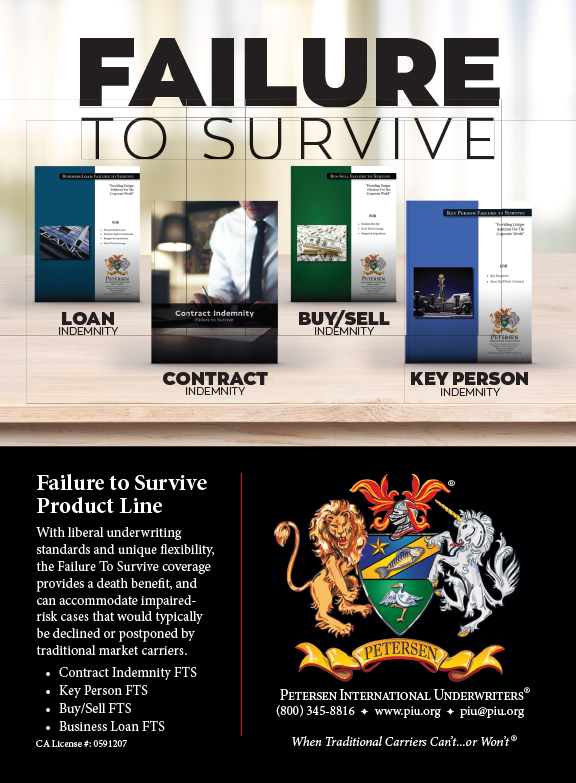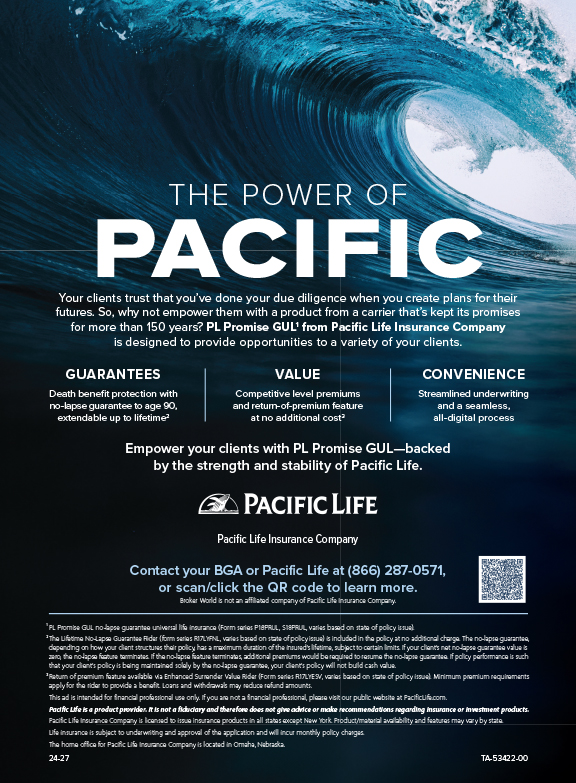A Brief History Of Health and DI Insurance In AmericaThe genesis of the American health insurance industry was more an unplanned evolution than a planned event. Like other forms of insurance in America, the concepts were copied from successful plans used in England. Our history is imprecise because much of what transpired in our short but dynamic past resides in the spoken word. Little recorded history is available.
We do have some documentation that can help to build a reasonable history of the industry’s development, but other areas must be filled in. For example, there are records to show that an Englishman by the name of William Gybbons negotiated with some marine insurance underwriters in 1536 to insure his life for one year. The death benefit was approximately $2,000 for a single premium of about $80 in current values. We have no record of why the insurance was purchased, but we do know that Mr. Gybbons used the insurance…he died four days before the end of the contract period.
The underwriters were dismayed at the loss and regretted that, in their greed, they got away from their real purpose, which was to insure ships and cargo, the only wealth recognized in those days. Their reluctance to pursue life insurance paved the way for the development of a life insurance industry in England.
In 1759, the first life insurance company was formed in the United States. That company, the Presbyterian Minsters Fund, still operates successfully today. In 1794 a general carrier, the Insurance Company of North America, was formed, but by 1804, INA had sold only six life policies. Discouraged by the results, the company discontinued writing life insurance until 1957.
In 1835, New England Mutual Life was chartered. Soon thereafter, a number of mutual life insurance companies were formed, but sales were not brisk. The product in that era was dismal; it had a term death benefit and was bought in small amounts, usually to cover funeral expenses. In those days the value of a life was measured by possessions, not by the person’s ability to produce future wealth.
The life insurance industry got a big lift following the success of Elizur Wright in forcing a no-forfeiture law through the Massachusetts legislature in 1860. His effort marked the beginning of cash value accumulation in life insurance. Cash values added living benefits to the death benefit plans.
It was a time in history when banks were paying zero interest to savings customers. Life insurance companies started crediting 2 percent interest on the policy reserves, and Wall Street financiers soon recognized that 2 percent was better than 0 percent. Investment firms encouraged life companies to sell the idea of savings and retirement concepts and, as sales increased, so did the commissions of Wall Street firms that served as investment counselors to life companies.
We need to correct our nomenclature so that all participants in the industry use the same names and references. There is ample room for argument that most life insurance companies should also offer “living death” insurance, and our industry should cooperate more fully to offer adequate amounts of insurance to cover this client’s needs. The industry should also work on making risks more easily acceptable.
Much education is needed so workers can appreciate the value of their earnings and the high importance of adequately insuring the income asset.
This experience of collecting premiums and investing reserves was probably the beginning of our industry’s inclination to view life insurance companies first as financial institutions and second, as insurers. Life companies in general do not respond well to underwriting risk. Understanding this helps us to see how a separate insurance industry—the health insurance industry—developed between the life and casualty segments of the insurance industry.
Exploring the Niche
In the earliest stages of development, specialty companies that addressed the niche between life and casualty insurance provided the exploration of the market. Some were unsuccessful; others had remarkable success. Some of the greatest fortunes ever made in the business were made by specialty health insurance entrepreneurs. Despite these successes, however, most life and casualty companies remained aloof from the health insurance business.
The largest premium-producing segment of the entire insurance industry today is health insurance. That unfortunate choice of words—“health insurance”—made in the early 1960s by a select industry commission appointed to standardize insurance terminology, has confused consumers and industry people ever since. Our nomenclature has shifted and changed over the years, prompting substantial arguments with each turn.
Along with the changing labels was a transition of interests in the kinds of insurance banded under the heading health insurance. In 1847, the Massachusetts Health Assurance Company became the first U.S. insurer to offer insurance benefits for sickness. Three years later, the Franklin Health Assurance Company, another Massachusetts insurer, began issuing accident insurance plans. Neither company enjoyed sustained success.
Even then, the designations were confusing because health companies sold accident plans and accident companies sold sickness plans. The creation of the Travelers Insurance Company in 1863 by James Batterson, an architect from Hartford, CT, gave some stimulation to the sale of accident insurance. While on a trip to England, Batterson was impressed with the brisk sales of travel insurance to persons traveling by rail. His endeavor to duplicate the practice in the United States was so successful that the company expanded into all forms of insurance, including property/casualty, life and annuities. Today it is one of America’s largest multiple-line companies.
A milestone was reached in 1890 when Royal Maccabees Life, at that time a fraternal life insurance society, offered a true disability policy. This carrier is believed to be the first in North America to issue disability insurance.
Public Awareness
In 1907, the first non-cancellable, guaranteed-renewable disability policy was issued in the United States. This development confirmed the public’s awareness of the need for insurance protection against loss of income.
The Industrial Revolution prompted many Americans to abandon hunting and gathering and begin working for a paycheck. With earned income, one could buy a house instead of building a shelter; one could buy comfortable clothing instead of wearing an animal’s hide; one could buy food that tasted good and was nourishing instead of eating only to survive.
With dependence on a paycheck, people became captives of their work. Employers often forced employees to work in hazardous and unhealthy conditions. Injuries on the job and industrial disease caused serious problems for many. In 1908 the federal government enacted the Workers’ Compensation Law, intended to bring relief to the vast numbers of people who were devastated by the financial effects of disablement.
Up to this point, disability insurance was considered a form of casualty insurance. Disability and medical plans were considered casualty coverage by some and life coverage by others.
A few insurance company executives saw a profitable future in underwriting disability insurance. They were concerned, however, about the government’s encroachment into the field with the proliferation of Workers’ Compensation and industrial disease laws. In 1917 several companies organized the Insurance Economics Society, an organization intended to monitor legislation and expanding government involvement in disability insurance and to lobby against such legislation.
The society was not activated for the next 13 years because of the economic conditions brought about by World War I, the Roaring 20s and the Great Depression, all of which consumed the attention of legislators. No new disability insurance legislation was deemed serious enough during those years to merit activating the society.
The case for disability insurance got a substantial intellectual life when Solomon Huebner published the book, Life Insurance, in 1915. Here Huebner explained his concept of Human Life Value, which he defined as the capitalized value of a lifetime of earnings—a person’s greatest asset and one that should be insured against loss.
Two Deaths
Huebner observed that there are two kinds of economic death: “dead death” and “living death,” that can bring on the catastrophic situation in which a person no longer can produce income, and all who had depended on that income will suffer dire consequences. Of the two, living death is worse financially because not only is the income lost, but the victim lives on to consume the family’s resources. Huebner specifically referred to hospital and medical expenses, in addition to lost wages. He wrote and spoke of this predicament at least 14 years before the first hospital/medical insurance plan was created in America.
In the same book, Huebner expressed the view that “disability insurance clearly falls within the life group of coverages.” This was the signal for life insurance companies to wholeheartedly embrace disability insurance and lift it from the domain of the casualty companies. Unfortunately, this did not occur. Currently, less than 10 percent of our life insurance companies offer disability insurance.
Beyond the experimental efforts to combine disability coverage with life insurance, little effort was given to bringing living death insurance to the American people. The few life companies that did enter the field in the 1920s were seriously hurt by the 1929 stock market crash. People out of work and desperate for income were filing false claims, malingering on legitimate claims, and even inflicting injuries on themselves to collect benefits. Improper and careless underwriting during the boom years of the 1920s compounded insurers’ devastating results. Discouraged, the life companies left the disability field and did not reenter it until the 1950s.
The life companies’ lack of interest in disability insurance left a large niche for specialty companies to enter the field. Casualty companies sustained a high interest in writing Worker’s Compensation coverage, and some had rather aggressive departments that offered forms of individual disability coverages. The well-known New England-based disability companies stressed noncancellable coverages, while some of the specialty companies introduced commercial or cancellable coverage.
An area of common interest developed during the 1930s, 40s and 50s around the form of insurance then called accident and health, health and accident, accident and sickness, or sickness and accident insurance. The nomenclature was controversial. Some held that “A” comes before “H” or “S.” Others held that sickness offers to a condition of health, not accidental injuries, and that since sickness caused more claims than accidents, the term sickness should come first. At this point the terms referred to disability insurance, not medical insurance.
Protecting Agents
By 1930 the Accident and Health Conference was formed by insurers in Chicago to protect and enhance their interest in the accident and health field. The Bureau of Accident and Health Underwriters had been formed earlier on the East Coast for similar reasons, but Midwestern and Western-domiciled companies were refused membership.
The Accident and Health Conference was first headed by Harold R. Gordon, a visionary whose memory is perpetuated by the presentation of the annual Harold R. Gordon Memorial Award, given by the National Association of Health Underwriters to a person who has contributed distinguished service to the industry. Gordon realized that not only must companies be organized to protect and enhance their common good, but insurance agents must likewise be organized. He found little interest among casualty and life agent associations to counter the expansion of government into the accident and health field, so he guided the formation of the Chicago Association of Accident and Health Underwriters. He assisted in creating other associations, and in 1930 organized what is now the National Association of Health Underwriters (NAHU).
Great Triumphs
The A&H conference and the A&H bureau ultimately merged to become the Health Insurance Association of America (HIAA). With the Insurance Economics Society, which was established in 1930, HIAA and NAHU worked to offset contrary legislation. The legislative triumphs of these organizations seem impossible in light of the comparatively small numbers of involved people and the modest budgets with which they operated. But the facts are there. Determined, motivated people held back the tide of legislation that would have socialized the health insurance industry and destroyed the finest health care system in the world.
The first cash-sickness law was passed in 1942. In the years following, 20 to 30 states proposed similar laws to provide payments for sickness disabilities that would approximate the benefits provided by Workers’ Compensation for accident disabilities. Such laws would have cut deeply into the potential market for disability insurance, denying both carriers and agents a rightful business opportunity. With the Insurance Economics Society pointing out such legislative efforts and with HIAA and the diligent members of NAHU lobbying against such laws, the passage of cash-sickness laws has been held to five states in the nearly 50 years of efforts of these organizations.
The triumvirate was seriously tested in 1948 when President Harry S. Truman endorsed a socialized medicine bill known as the Wagner, Murray, Dingle Act. This was one year before the first major medical plan was introduced and only 19 years after Blue Cross was invented by the faculty at Baylor University. In the same year, 1929, the first major health maintenance organization, Ross Loos in Los Angeles, was established.
Physicians and hospital administrators recognized the great value of having people insured for hospital, surgical and medical costs. They encouraged their patients to buy it, and the pressure of the endorsement spurred the sale of hospital/medical insurance. Commercial carriers soon developed plans to compete with Blue Cross organizations. Consumers, stunned by the high costs of medical care, encouraged others to buy health insurance. Labor unions used the popular fringe benefits as a bargaining chip in negotiations with management. Today, the purchase of medical insurance is deemed a necessity by most people.
As doctors and hospitals profited by having their bills paid in full and on time, they were able to invest in the latest equipment, new technologies and continued education and training. A cycle was created that provided funds for research and development, new medicines, procedures and facilities.
In just a relatively few years we have witnessed the creation of a dynamic health insurance industry. Unwanted by most of the traditional casualty and life companies, it became a complex of specialty companies, Blue Cross organizations, HMOs, and some casualty and life companies. In total, it is America’s biggest insurance segment, serving 85 percent of the American people.
Ironically, as good as our industry is, we have gotten priorities out of order. LIMRA, the Life Insurance Marketing and Research Association, tells us that only 27 percent of American income earners now have any form of disability insurance, but 85 percent have some form of medical care insurance.
Our health insurance business started as disability insurance, and it stands to reason that disability insurance should be our primary insurance need, for it provides funds for the necessities of life. Medical insurance provides the necessities of life for doctors, hospital workers and the medicine merchants, but it does not pay the mortgage, buy food and clothing, or educate our children.
Despite this peculiarity, we have much to be proud of and much yet to accomplish as an industry. We need to correct our nomenclature. We need to get our life insurance companies wholeheartedly in the disability business, and we need to adopt a cooperative spirit among health care providers and the public.







